Until it was brought to my attention recently, I never thought about most playdough having wheat in it. Some people have reactions to foods if they come in contact with that food in ANY way — not just ingesting it. Naturally I went to Pinterest to check out all the different kinds of wheat-free playdough recipes there are and what might work best. In working with children, there are so many kids with food allergies and I wanted to have an option available for my wheat-allergic friends!!!!! So friends, this is for you!
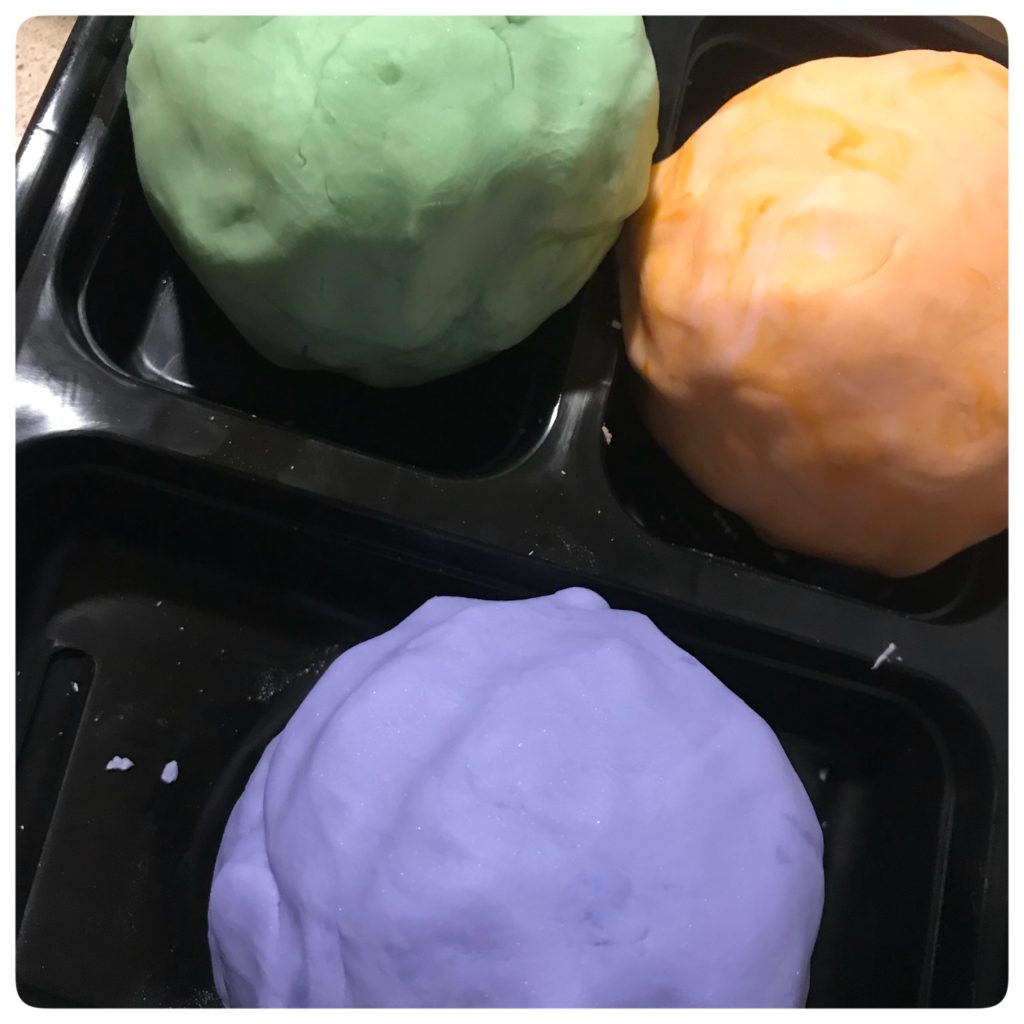
I looked at several recipes and decided to use one of the most common recipes I found. The texture for this wheat free playdough is a little different than regular playdough, I think that’s probably from the texture of the cornstarch. It’s also a lot dryer than regular playdough, and dries out pretty quickly, even in an airtight container. I came up with my solution for this, but I’ll wait until the end after we make our playdough.
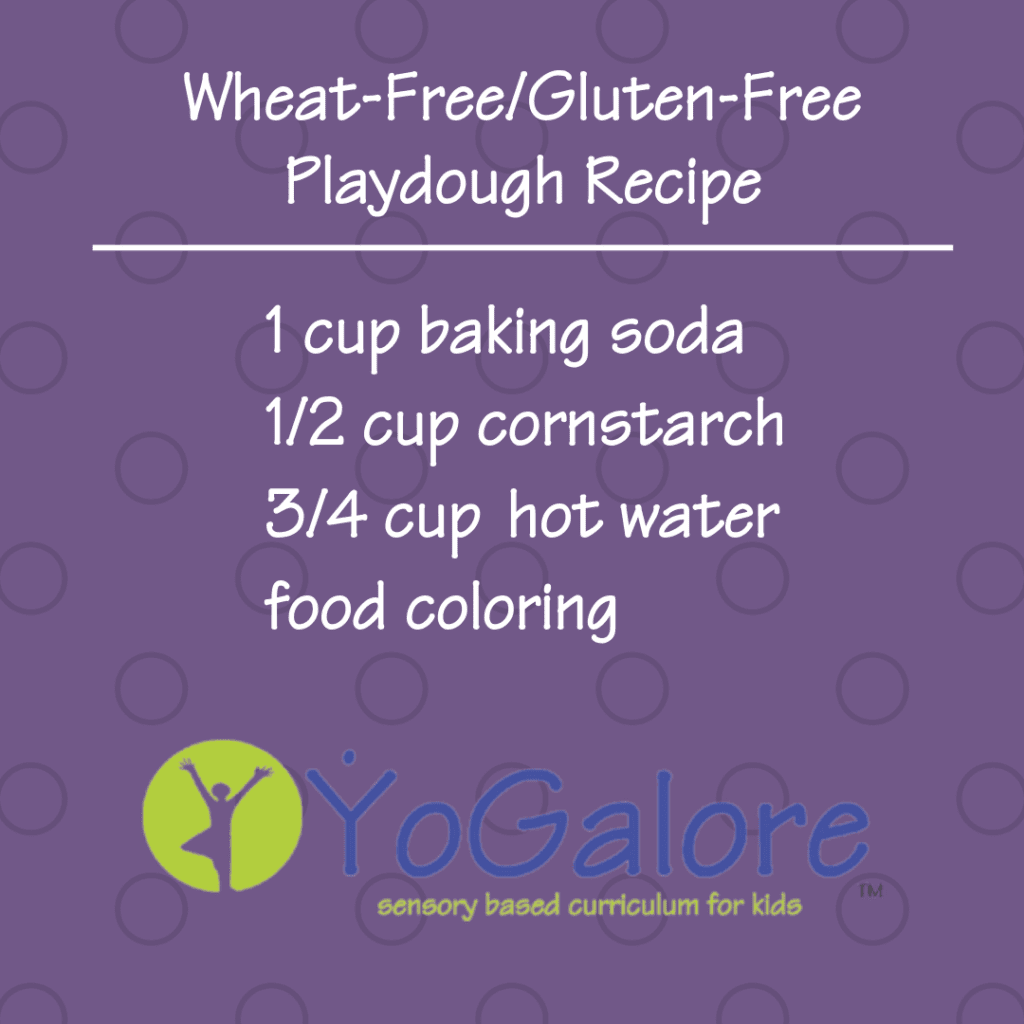
I put all four ingredients in a pot and put directly on the stove on medium high heat while stirring constantly. It took several minutes for me to see a change, but you will. It starts to thicken and bubble, much like regular playdough does. I used Wilton icing colors to color my playdough (I have had these for years and wanted to use them up).
I have since switched to Wilton gel food coloring in the squeeze bottles because it’s less messy, but one thing I noticed with this batch of playdough is that while I tried to make sure it was mixed very well, the coloring still didn’t completely get mixed in which swirled and I really liked it!!! I like the Wilton colorings so much because I can easily mix colors and get pretty much any shade I want, including bright and vivid or slightly muted.
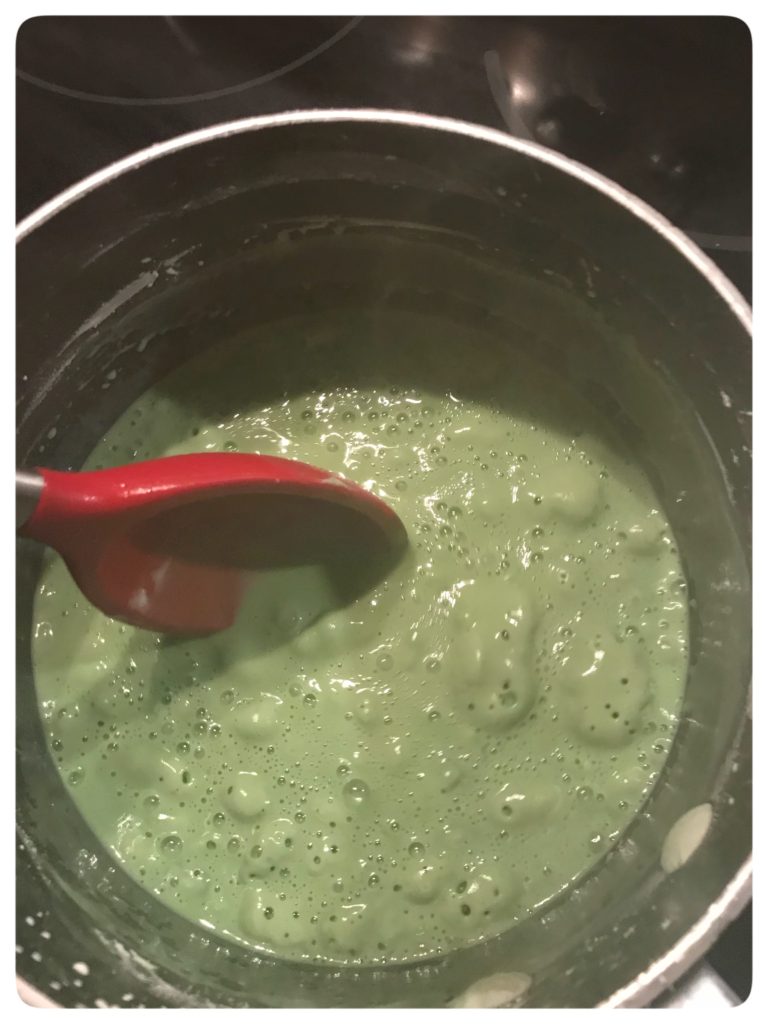
Shortly thereafter your mixture will begin to look like this.
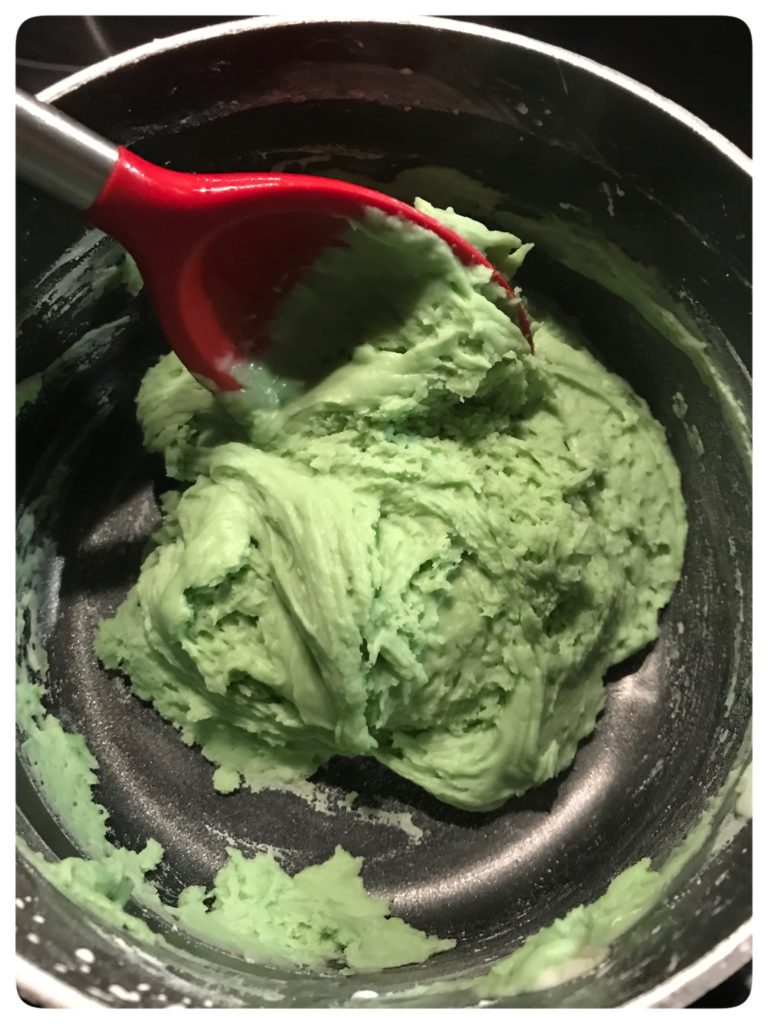
Once it’s mostly all together in a big clump, remove from heat and set your dough on a cutting board or clean surface to cool. Once it’s cooler you can knead it a little and work with it. As I noticed in some of the other posts regarding wheat free playdough, it is a different consistency and it does tend to dry out pretty quickly.
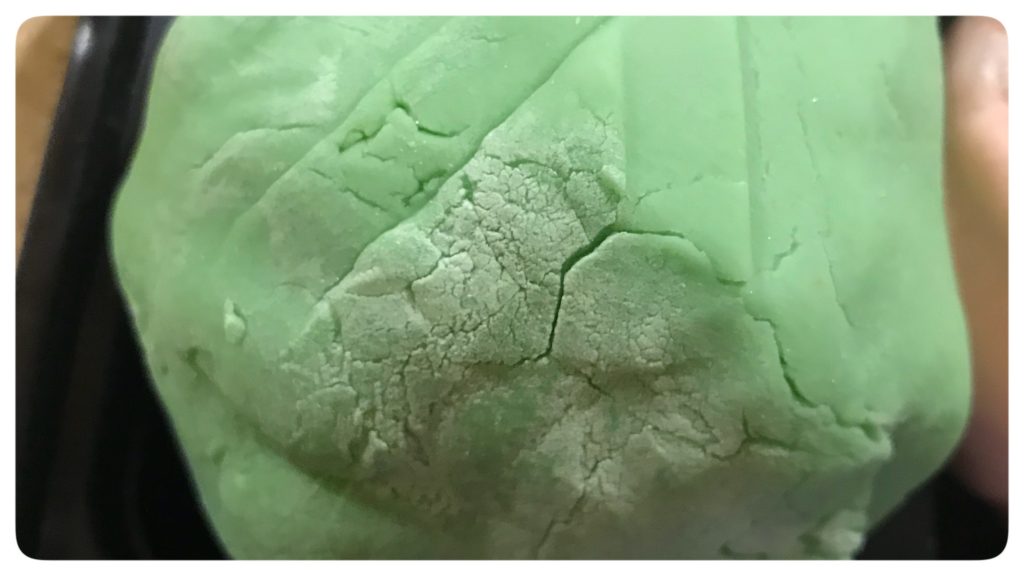
One post I read said you can put your dough back on the stove and add water. This sounded like a big bummer for me. The last thing I wanted to do when I needed to use this with my preschool kiddos was have to put it back on the stove and try to get it back to its original (yet very temporary) awesomeness. But hey, different things work for different people.
I came up with a fix that worked for me. First thing I did was added a few drops of essential oils to each color. I did lavender oil for purple, grapefruit oil for the orange and rosemary oil for the green. My 21-year-old son came into the kitchen and asked what I was making because it smelled amazing. This helped a little bit with the dryness but it just wasn’t enough for me. I took some fractionated coconut oil I had (a carrier oil for making essential oil blends for things like rollerballs bottles) and squirted a pump onto/into each ball of dough, then worked it through really really well. Immediately it was a TON better.
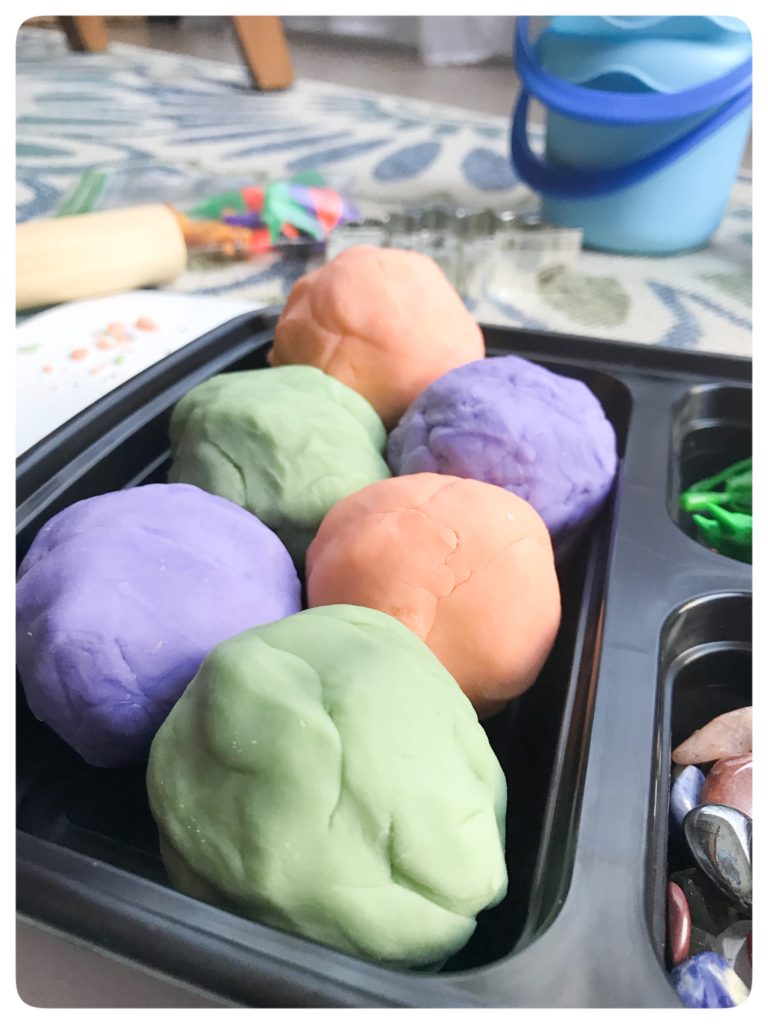
So adding the coconut oil worked for me, however, I know because of allergies and personal preferences some people won’t want to use coconut oil. I would think that any kind of oil would work. The dough is still a little different than regular playdough, but it’s made with different ingredients so that’s expected.
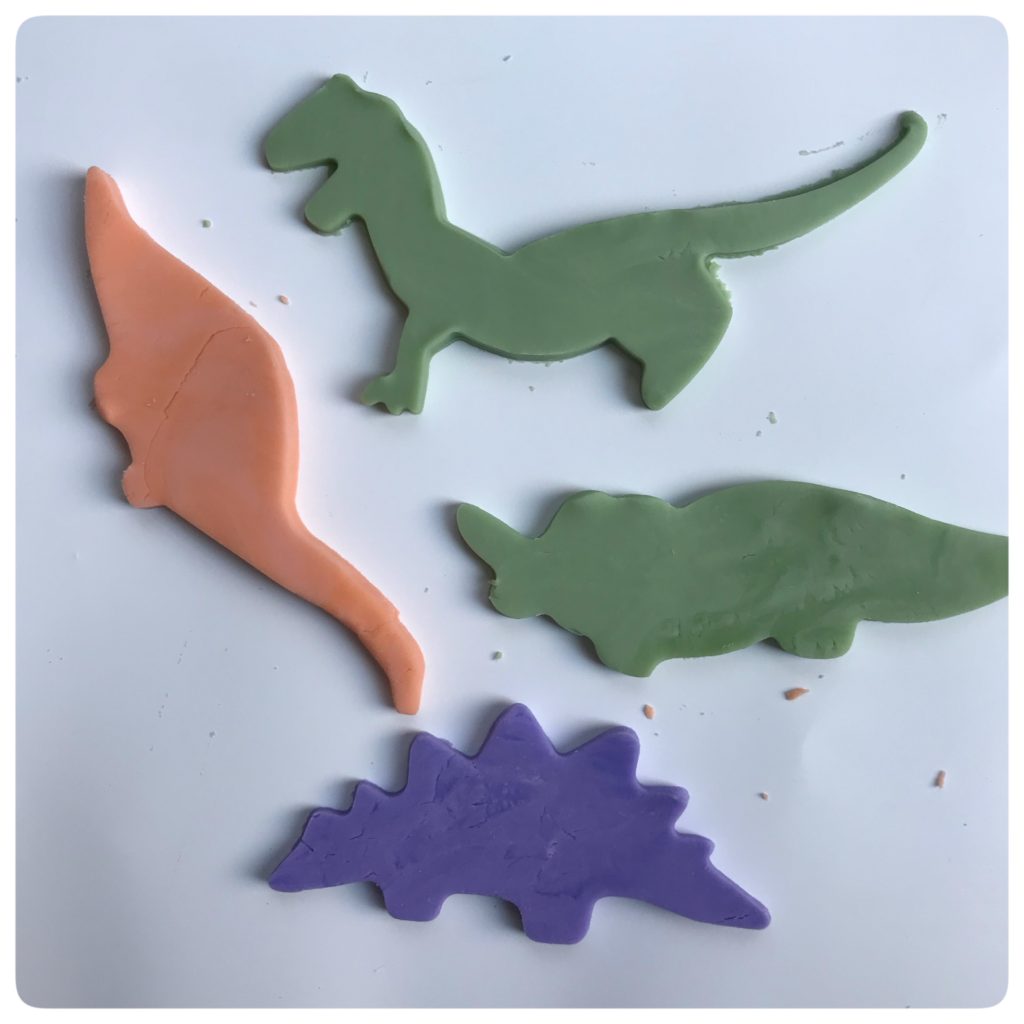
I used the playdough to make some dinosaurs for two other projects/posts I was working on and I loved it. The color, the texture, everything. If you are in need of a good, inexpensive wheat free playdough, I recommend this recipe. Just add oil. You could probably add oil to it while cooking, but I didn’t want to mess with the recipe the first time.
P.S. The coconut oil thing also works with regular playdough if it either starts to get dry or you can also automatically work some oil into the dough as soon as it cools like I did here to prevent it from getting dried out at all. It’s now standard for me when I make playdough. I have done this on many batches and it keeps the playdough in much better shape for a lot longer. The last batches I made lasted six months, and really there wasn’t anything wrong with the playdough, it was just time to make some new batches.
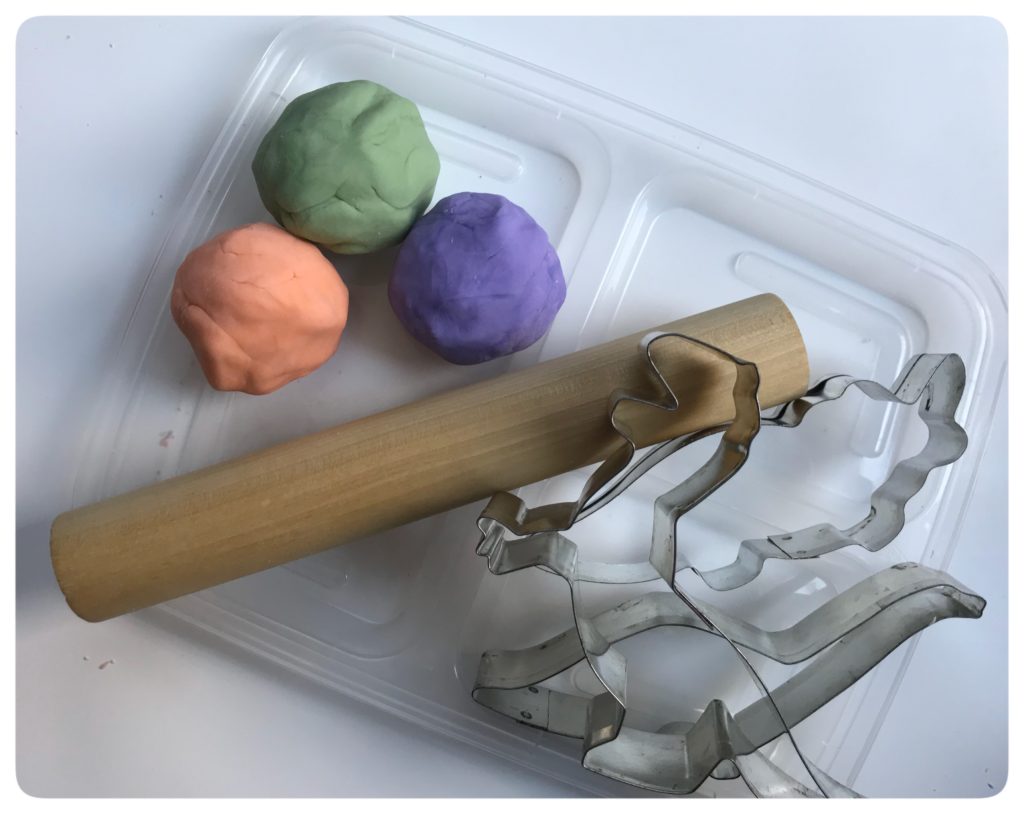

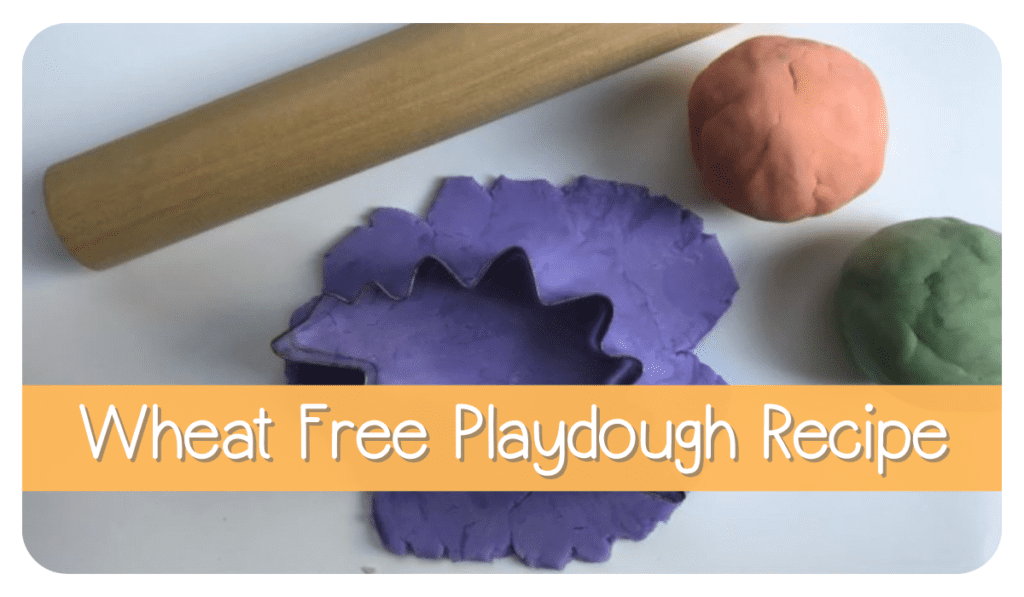



One Response